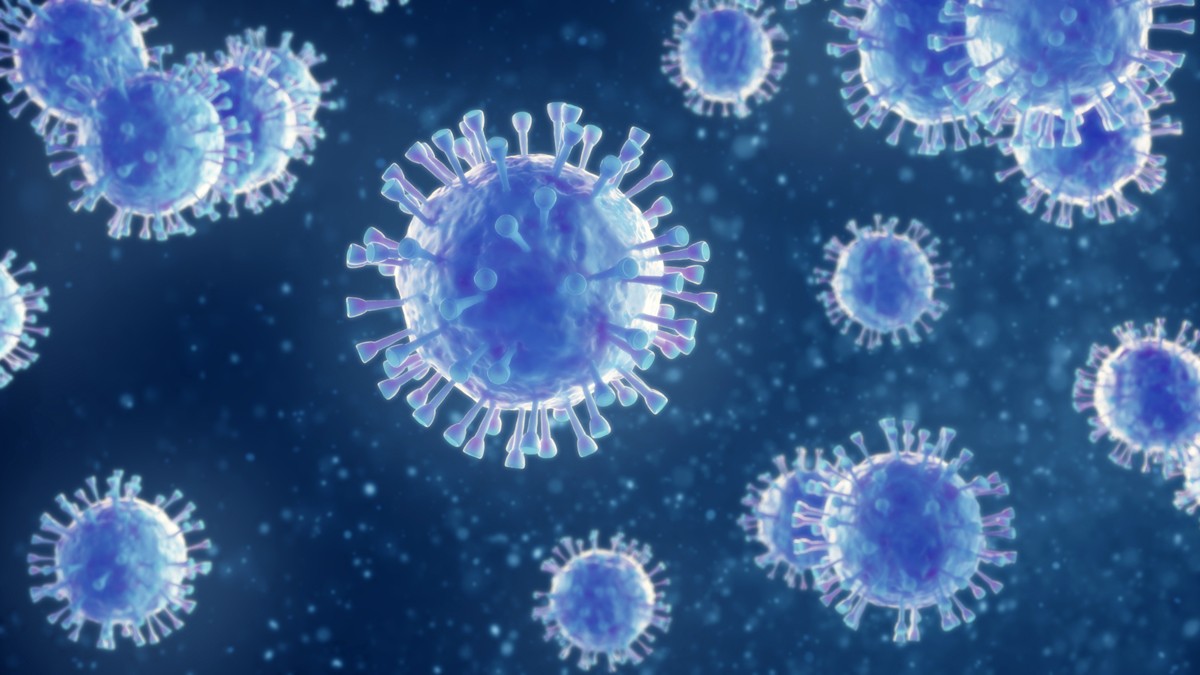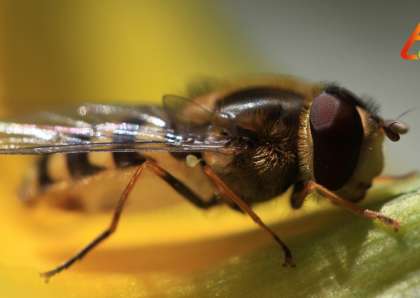More than four billion years ago, that is, less than six hundred million years after the formation of the Earth, some simple cells, known as "unicellular," were formed, and primitive life began, which means that these viruses preceded the modern man who appeared on Earth before 200,000 years ago, it was these viruses that first colonized the Earth.
Viruses did not leave a patch of land but occupied it, for more than three billion years they did not leave dry land or water until they were on its surface, and after the emergence of animals 600 million years ago, they began to move away to the most isolated areas, the highest mountains, abyssal caves, craters of ancient volcanoes, Abyssal forests, some isolated islands, in the abyssal ocean basins, and since more than 300 million years ago these primates evolved to form groups of carriers of genetic material Because its body is made of protein and nucleic acid such as DNA and RNA, which made it reproduce faster thanks to its DNA and genetic material.

Virologists and microbiologists have agreed that there are many millions of types and families of viruses, the number of which is estimated (10 ^ 31), and this number means one and next to it is 31 zeros, and what confirms the enormity of their number is that the number of stars in the visible universe is estimated at (10 ^ 24) That is, the number of viruses is 10 million times greater than the number of stars, and if we are able to place each virus on top of the other, and we create a tower of viruses, this tower will extend beyond the moon, the sun, and the closest stars to our group, "Alpha Centauri", but it will cross the boundaries of the trail galaxy Milky Way and neighboring galaxies, reaching a height of 200 million light years.
"The number of viruses is 10 million times greater than the number of stars .. If each virus is placed on top of the other, it will reach 200 million light-years in length"
Despite the above, we will find that the latest report of the International Committee on Taxonomy of Viruses in 2005 provided an accurate description of about 5450 viruses, belonging to more than 2000 species, 287 genera, 73 families, and 3 orders, in addition to about 15 thousand viruses that inhabit the depths of the ocean, and that there are millions of Species that have not been discovered yet, despite the announcement of one of the largest studies that surveyed the surfaces of the North and South Poles, discovering more than 200 thousand species of marine viruses, and by obtaining samples from only 80 sites around the world, during the period from 2009 to 2013, and at depths that reached 4000 meters to the surface of the ocean.

The human relationship with viruses began nearly 137 years ago, specifically in 1883, when the German chemist, Adolf Meyer, accidentally noticed the presence of smaller minutes of bacteria that could cause diseases to humans, even though he acquired his name “virus from the Latin origin” a deadly poison. 1392, and it was classified as "the causative agent of infectious diseases" for the first time in 1728, And if the Russian biologist Dmitry Ivanovsky calculated the discovery of viruses in 1892, when he discovered the "tobacco whitewash" virus, a plant virus that infects tobacco leaves, which he called "viruses", then it was rediscovered when the Dutch plant and microbiologist Martinus William Bairink, it is infectious for uninfected cells.
"Scientists have been able to describe 5,450 viruses, which belong to more than 2,000 species, 287 genera, and 73 families"
Viruses spread abundantly in the vicinity of humans, this is accurate scientific information, so that virologists and microorganisms have unanimously agreed that viruses are the most abundant microbes on the planet, so that one square meter of the planet's surface can rain with hundreds of millions of viruses, and tens of millions of bacteria, And that is only in one day. Indeed, University of British Columbia scientists have proven that one square meter contains 800 million viruses, and that there are about 320 thousand types of viruses that infect mammals alone.

What is the real importance of viruses? And is it of the importance that it found for the service of man ?, These are the most important questions now. As soon as a new viral attack begins, as happened recently with the Corona virus, humans are in a state of panic and terror, Although we are exposed daily to millions of viruses without being infected with anything, the worst virus attacks during the twentieth century were not more deadly than humans themselves, at a time when wars killed more than 235 million people, and famines killed more than 68 million people, and died More than 6 million due to smoking, more than 1.35 million in road accidents, and the suicide of more than 800 thousand others, bird flu did not kill more than 400 people, and SARS did not kill more than 800 people, although the number of Spanish flu victims in 1918 exceeded the 21 barrier. A million people, and the 1968 Hong Kong flu killed nearly a million people in Singapore, Vietnam and Hong Kong.
"One square meter contains 800 million viruses.. and more than 320 thousand types of viruses only infect mammals"
But what are the benefits of viruses ?, Viruses have a number of benefits and uses in a number of fields of medicine and genetic engineering that could be used in the service of mankind, the most important of which is cellular and molecular biological studies, especially in the areas of genetic research, understanding genes, and replicating and copying DNA. And yeast forms RNA and its translation, as well as in the formation of proteins, the basics of immunology, as it is used in various fields of medicine, where viruses are used as vectors to carry therapeutic materials to cells targeted by gene therapy, and then destroy disease-causing bacteria, in particular. Cancer cells.

Viruses had an important role in producing vaccines against viral diseases, which was proved by the British doctor Edward Jenner, who was able to produce the first vaccine for smallpox by using cowpox viruses to vaccinate people against infection, to produce the first anti-viral vaccine with the same viruses, as it is used in The vaccines for polio, measles, and chickenpox are weak live viruses or particles of dead viruses, and when they enter the healthy human body, they help the immune system to recognize this type of virus and create immunity against it, as the body remembers these particles and attacks them in the event of any infection. In addition to its use in the fields of agriculture, especially in the means of modification and genetic engineering to produce modified genes, which can be transferred to plants, as it can be used to control harmful pests.
































































Egyptian Site & magazine